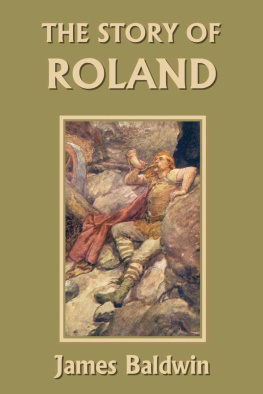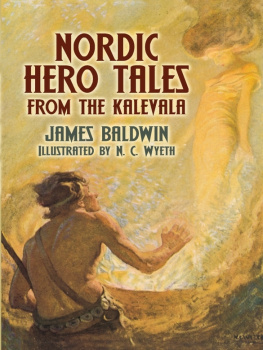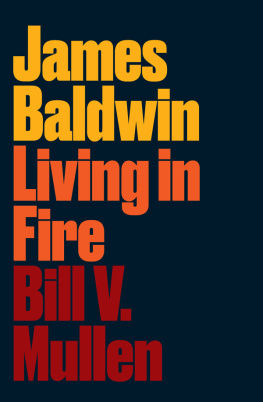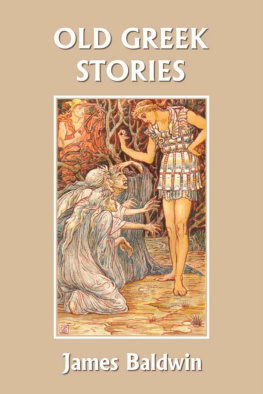In My Youth
by
James Baldwin
Yesterday's Classics
Chapel Hill, North Carolina
Cover and Arrangement 2010 Yesterday's Classics, LLC
All rights reserved. No part of this book may be reproduced or retransmitted in any form or by any means without the written permission of the publisher.
This edition, first published in 2010 by Yesterday's Classics, an imprint of Yesterday's Classics, LLC, is an unabridged republication of the work originally published by Bobbs-Merrill Company in 1914, under the title In My Youth, From the Posthumous Papers of Robert Dudley , with Robert Dudley, pseudonym of James Baldwin, as author. This title is available in a print edition (ISBN 978-1-59915-314-8).
Yesterday's Classics, LLC
PO Box 3418
Chapel Hill, NC 27515
Yesterday's Classics
Yesterday's Classics republishes classic books for children from the golden age of children's literature, the era from 1880 to 1920. Many of our titles are offered in high-quality paperback editions, with text cast in modern easy-to-read type for today's readers. The illustrations from the original volumes are included except in those few cases where the quality of the original images is too low to make their reproduction feasible. Unless specified otherwise, color illustrations in the original volumes are rendered in black and white in our print editions.
Editor's Note
When Robert Dudley began to write the chapters composing this unique autobiography he had no thought of their ultimate publication. His object was rather to produce something to be preserved to the edification and entertainment of his remote posterity, and for that reason he addressed his work to Leonidas and Leona, his imaginary descendants in the fourth degree. But to a man who dies childless there is not much hope of posterity; and it has seemed to the friends of Mr. Dudley that to withhold these sketches until the advent of impossible great-great-grandchildren would be to deprive the world of as many rare chapters of literary worth and historic interest. They are, therefore, now offered to the public with the confident hope that as contributions to the early history of life and manners in "the Middle Ages of the Middle West," they will have an enduring value.
It will be observed that the author has taken his readers unreservedly into his confidence and has concealed none of his own frailties nor the peculiar and humble environments of his youth. Although his narrative is sometimes illuminated with the colors of his exuberant fancy, he has related no incident that was not a matter of actual occurrence. Wherever a revelation of identity might cause embarrassment to sensitive souls, the names of persons and places have been thoughtfully disguised. In the case, however, of historical personages or of men in public life no such caution has appeared to be necessary.
Contents
CHAPTER I
The Center of the World
T HE picture which I would paint on your mental canvases, my dear Leonidas, my dear Leona, is that of a backwoods settlement in the Middle West at the time when such settlements were by no means rarities. It lies deeply sequestered in the forest, ragged, raw, and of uncertain extent. Its prevailing rudeness and uncouthness may at first repel you, but its air of newness and simplicity will surely deserve your admiration. Here you may see the beginnings of things. The roads, the fences, the houses, the clearings, the farms are all just emerging from the embryo state; they are the promises of what are to come in later days. And the peoplehow old-fashioned they are, and how unspoiled by the ways of the world! The simple life exists here in its primitive purity, the rawness of innocence prevails.
Now imagine in the midst of that settlement a squatty, little log cabin standing quite alone near the edge of a clearing. It is one among many of its kind, and is in perfect harmony with the mingled newness and old-fashionedness of its environment. It is such a habitation as can not be found to-day in the whole length and breadth of Hoosierdom; but, in that backwoods period to which I am introducing you, it is the type of hundreds and thousands of homely dwellings. The logs which compose its walls are unhewn, some having the bark still clinging to them, and the spaces between are chinked with clay and moss. The roof is low and covered with broad split clapboards which are held in place by long and heavy poles. The chimney is of the stick-and-clay variety, cavernous at the bottom and tapering narrow at the top, and rivaling the proverbial mud fence in its unapproachable ugliness. At the end of the cabin, opposite the chimney, there is a lean-to shed, made of poles and puncheons, and called the "weavin'-room" because it contains the loom and other appliances for making home-made cloth. Beyond this shed rises the skeleton of a new frame house which, when completed, will be the wonder and admiration of the entire New Settlement.
There is but one doorway in the cabin. The door itself is broad and strong, and it is hung on wooden hinges and fastened with a wooden latch. To lift the latch, you must pull a string that is passed through a gimlet hole in the board above it. At night, or when there is no admittance for intruders, the latch-string is drawn inside and the cabin becomes a castle. But, see now! The latch-string is hanging outa signal that all comers are welcome. Let us pull it, lift the latch and walk in.
The smooth floor of basswood puncheons, scoured to a snowy whiteness, invites our admiration and admonishes us to linger on the threshold and wipe our muddy soles. We enter. On this side of the room are a few splint-bottomed chairs ranged with precision against the wall, a three-legged "candlestand" and an ancient bureau. On the opposite side are the spinning-wheels, a square table, and a corner cupboard wherein are contained rows of tin cups and shining pewter plates and an array of "chany cups and sassers" and blue-figured dishes reserved for use "when company comes."
The rear end of the commodious room is curtained off into three sleeping apartments, each exactly large enough to contain a single spacious bed with a trundle-bed for children and emergencies beneath it. And see, now, the huge fireplace at the opposite end. It is a poem of comfort in winter, and a magazine of homely cheer in all seasons. Dinner is in preparation. The fire is blazing on the hearth. Steaming pots and skillets, on beds of glowing coals, send out savory odors to whet the jaded appetite. Potatoes are roasting in the ashes, a fowl is broiling in the "reflector," a "mess of greens" is boiling in the big dinner pot. A feast shall be ours if we will but accept the housewife's kindly invitation to "take a cheer and wait a bit."
The ceiling over our heads is low; it is made of rough clapboards laid upon a series of smoke begrimed poles which serve the purpose of joists. From the "j'ists" many things are suspended: hunks of jerked beef and links of home-made "sassage," bunches of dried catnip and fragrant camomile and pennyroyal, strings of red peppers for medicinal uses, and ears of choice seed corn. And if you look for it, you may see the square hole in the ceiling through which access is had to the boys' sleeping-room abovea dark low loft, the abode of mud-wasps and spiders and creatures of the night.
And now, having these pictures well outlined and impressed upon your imagination, direct your eyes once more to the open door of the cabin. A boy is standing therea little pale-faced fellow with tow hair, and with eyes indicative of the shrinking shyness of his heart. He is clothed scantily in a coarse shirt of home-woven linen and long "britches" (trousers) of brown jeans; other apparel he has none. The "britches," which are much too large for him, are held in place by a pair of "galluses" (suspenders) made of narrow strips of blue-colored tow-cloth. The lad's feet are bare, betraying a familiarity with the soil and showing the marks of many conflicts with briers and sharp-edged stones. His large frowsy head is also bare.


















